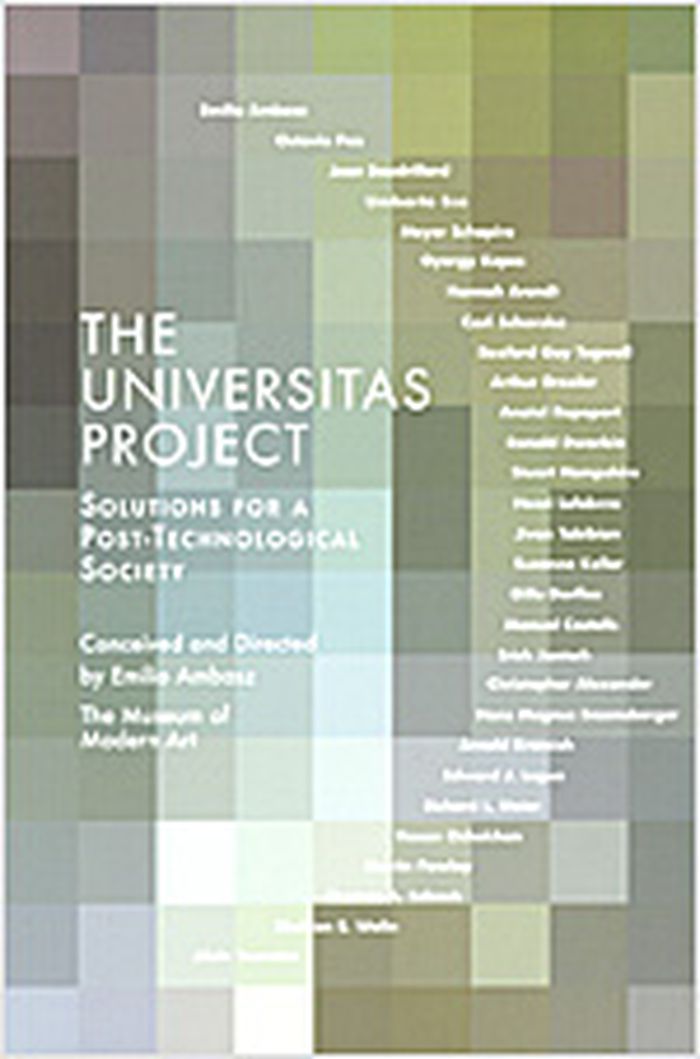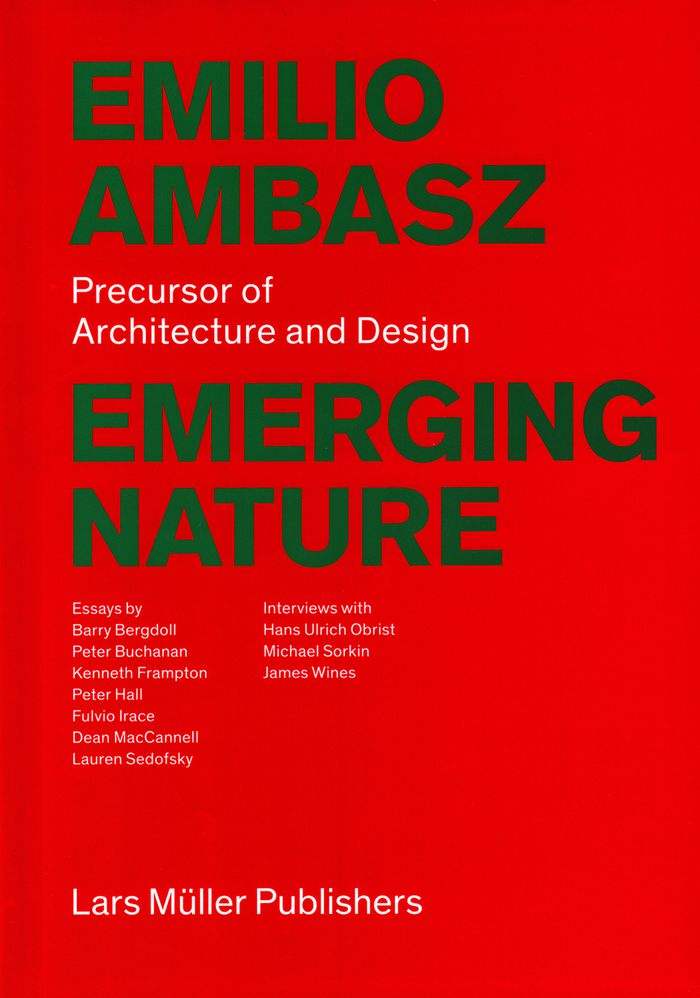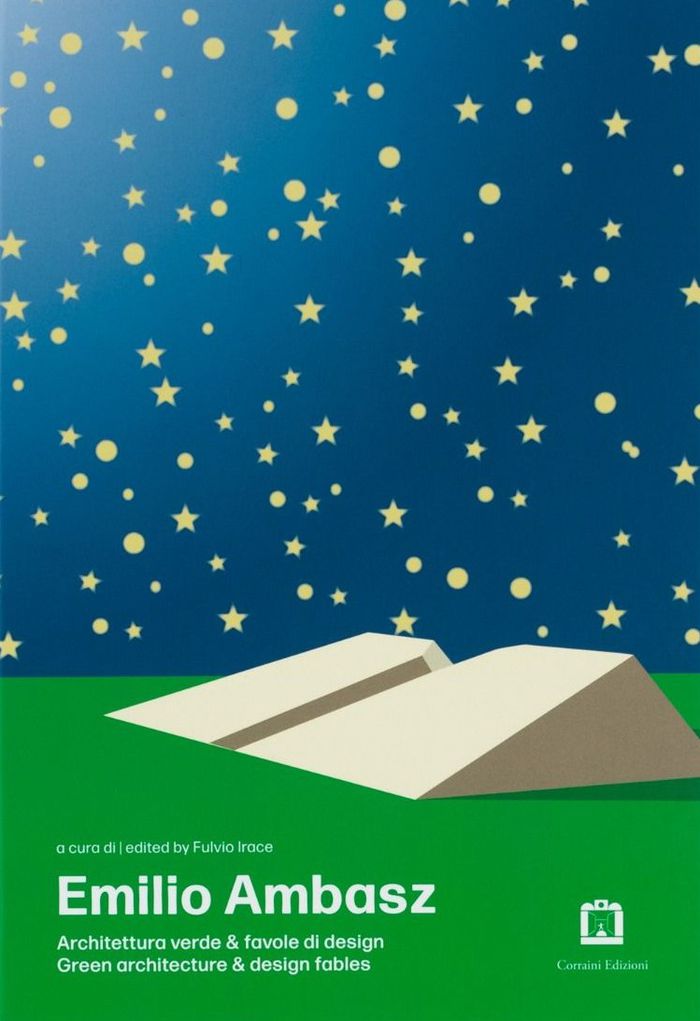$38.95
(disponible sur commande)
Résumé:
Conceived and directed by Emilio Ambasz. With essays by Jean Baudrillard, Manuel Castells, Gillo Dorfles, Ronald Dworkin, Umberto Eco, Erich Jantsch, Suzanne Keller, Gyorgy Kepes, Richard L. Meier, Martin Pawley, Octavio Paz, Anatol Rapoport, Meyer Schapiro, Carl Schorske and Jivan Tabibian, among others. With foreword by Terrance Riley. In January of 1972, The Museum(...)
The universitas project : solutions for a post-technological society
Actions:
Prix:
$38.95
(disponible sur commande)
Résumé:
Conceived and directed by Emilio Ambasz. With essays by Jean Baudrillard, Manuel Castells, Gillo Dorfles, Ronald Dworkin, Umberto Eco, Erich Jantsch, Suzanne Keller, Gyorgy Kepes, Richard L. Meier, Martin Pawley, Octavio Paz, Anatol Rapoport, Meyer Schapiro, Carl Schorske and Jivan Tabibian, among others. With foreword by Terrance Riley. In January of 1972, The Museum of Modern Art hosted "The universitas project," a two-day conference sponsored by the Museum’s International Council and the Institute for Architecture and Urban Studies. The participants, from a wide range of scholarly and artistic disciplines, engaged in a multidisciplinary debate on the future of design and design institutions in the postindustrial era. The project was originally described as "a critical and prospective inquiry into the relation of man to the natural and the sociocultural environment...specifically planned to explore the possibility of establishing in the United States a new type of institution centered around the task of evaluating and designing the man-made milieu." This volume publishes in their entirety the various components of the conference : the working papers that set the terms of the debate; the essays submitted by the invitees; the proceedings of the symposia responding to the papers; and the postscripts provided by the participants after the event.
Théorie de l’architecture
$45.00
(disponible sur commande)
Résumé:
"Emerging Nature" documents the work of the Argentinian architect, graphic designer and industrial designer Emilio Ambasz. The publication discusses his projects ranging from buildings and urban gardens including green facade vertical gardens to exhibition designs and everyday objects. The comprehensive volume features essays by various experts, interviews, a wealth of(...)
Emilio Ambasz : emerging nature, precursor of architecture and design
Actions:
Prix:
$45.00
(disponible sur commande)
Résumé:
"Emerging Nature" documents the work of the Argentinian architect, graphic designer and industrial designer Emilio Ambasz. The publication discusses his projects ranging from buildings and urban gardens including green facade vertical gardens to exhibition designs and everyday objects. The comprehensive volume features essays by various experts, interviews, a wealth of color photographs and drawings. Ambasz’s main concern is to integrate nature and construction into architectural design, which is why he is regarded as one of the most important pioneers of Green Architecture. In his work a combination of landscape and architecture emerges, in which his respect for the environment and ecological sustainability becomes clear. A prime example of this is the Fukuoka Prefectural International Hall in Japan: a building that houses more than 100,000 m2 of exhibition spaces, theaters and offices is also an open green area in the form of a hanging garden.
Architecture, monographies
$54.95
(disponible en magasin)
Résumé:
This book, edited by Fulvio Irace, brings together for the first time the design stories and writings with which Emilio Ambasz accompanied the projects that marked the various stages of his prolific career: an anthology that puts his gentle manifesto into practice – green over gray – and where his most iconic pieces of architecture are retraced, alongside stories of(...)
Green architecture and design tales
Actions:
Prix:
$54.95
(disponible en magasin)
Résumé:
This book, edited by Fulvio Irace, brings together for the first time the design stories and writings with which Emilio Ambasz accompanied the projects that marked the various stages of his prolific career: an anthology that puts his gentle manifesto into practice – green over gray – and where his most iconic pieces of architecture are retraced, alongside stories of cities he has loved or dreamed of and conversations with architects and artists with whom he has established a unique relationship of elective affinities.
Architecture écologique


